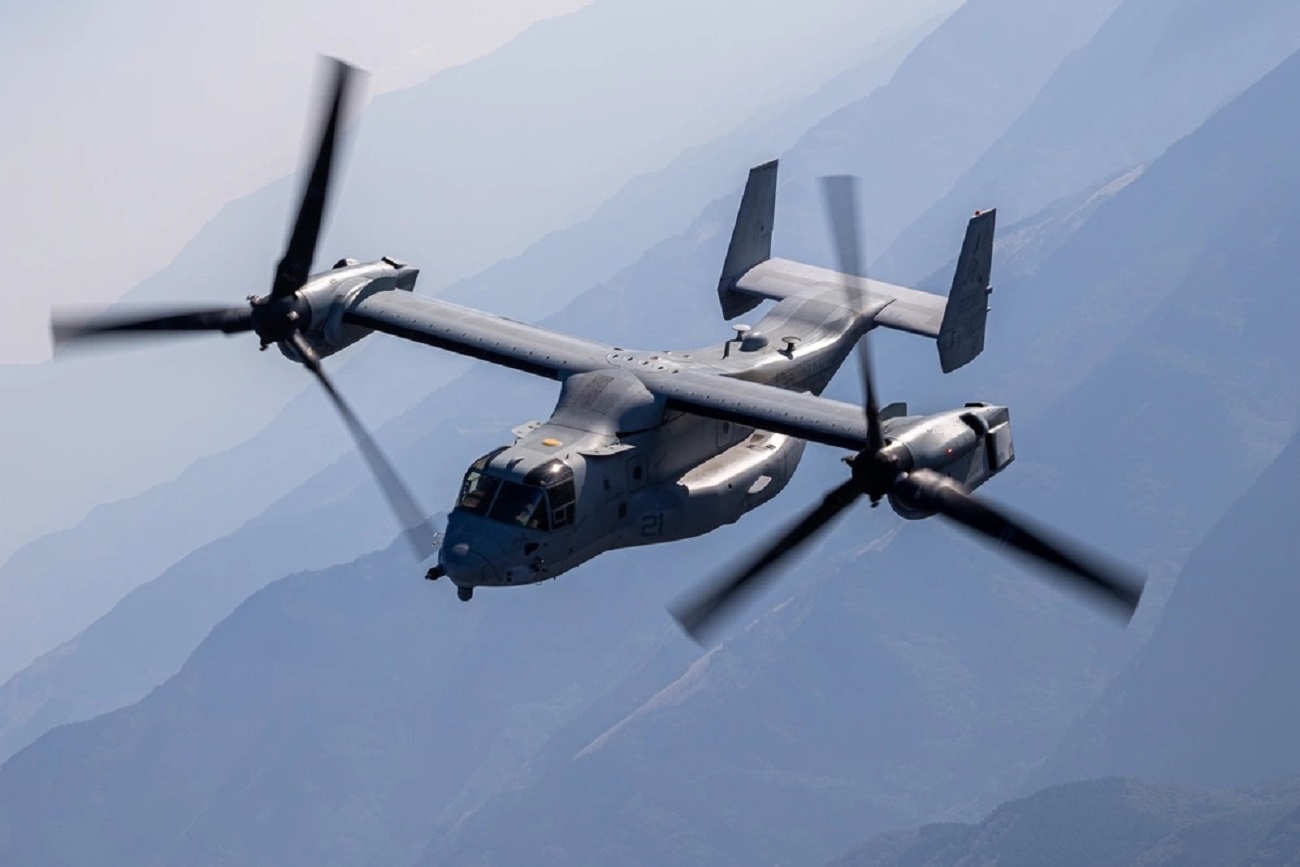Effective March 8, 2024 at 7 a.m. EST, U.S. Naval Air Systems Command (NAVAIR) is issuing a flight clearance for the V-22 Osprey thereby lifting the grounding. This decision follows a meticulous and data-driven approach prioritizing the safety of aircrews. A U.S. Air Force investigation began following the tragic loss of eight Airmen during the November 29, 2023, mishap off Yakushima, Japan. NAVAIR thoughts and prayers are with the families of the fallen. In response to the preliminary investigation indicating a materiel failure of a V-22 component, the V-22 grounding was initiated on December 6, 2023. The grounding provided time for a thorough review of the mishap and formulation of risk mitigation controls to assist with safely returning the V-22 to flight operations.
In concert with the ongoing investigation, NAVAIR has diligently worked with the USAF-led investigation to identify the materiel failure that led to the mishap. Close coordination among key senior leaders across the U.S. Navy, U.S. Marine Corps, and U.S. Air Force has been paramount in formulating the comprehensive review and return to flight plan, and this collaboration will continue. Maintenance and procedural changes have been implemented to address the materiel failure that allow for a safe return to flight. The U.S. Navy, U.S. Marine Corps, and U.S. Air Force will each execute their return to flight plans according to service specific guidelines. NAVAIR remains committed to transparency and safety regarding all V-22 operations.

The Bell Boeing V-22 Osprey is an American multi-mission, tiltrotor military aircraft with both vertical takeoff and landing (VTOL) and short takeoff and landing (STOL) capabilities. It is designed to combine the functionality of a conventional helicopter with the long-range, high-speed cruise performance of a turboprop aircraft. The V-22 plays an integral role in supporting our Nation’s defense and returning these vital assets to flight is critical to supporting our nation’s interests. NAVAIR continuously monitors data and trends from all aircraft platforms, so service members are provided the safest, most reliable aircraft possible. The V-22 first flew in 1989 and began flight testing and design alterations; the complexity and difficulties of being the first tiltrotor for military service led to many years of development.
The Osprey is the world’s first production tiltrotor aircraft, with one three-bladed proprotor, turboshaft engine, and transmission nacelle mounted on each wingtip. It is classified as a powered lift aircraft by the Federal Aviation Administration. For takeoff and landing, it typically operates as a helicopter with the nacelles vertical and rotors horizontal. Once airborne, the nacelles rotate forward 90° in as little as 12 seconds for horizontal flight, converting the V-22 to a more fuel-efficient, higher-speed aircraft, like a turboprop aircraft. STOL rolling-takeoff and landing capability is achieved by having the nacelles tilted forward up to 45°. Other orientations are possible. Pilots describe the V-22 in airplane mode as comparable to the C-130 in feel and speed. It has a ferry range of over 2,100 nmi. Its operational range is 1,100 nmi.















